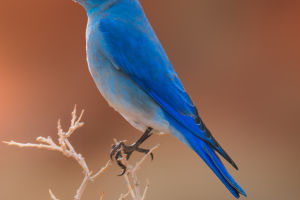Penguins live in the southern part of the planet but are loved everywhere. These funny birds don't fly but are fascinating to watch. They live in colonies and interact with each other. Some types, like Emperor Penguins, survive in tough places like Antarctic snowstorms.
They also face predators like orcas and leopard seals. Penguins seem like superheroes because they can do so much—except fly!
Sadly, penguins aren't doing well in the wild. Out of the 18 species worldwide, half are in danger according to BirdLife. Climate change, overfishing, poaching, and other dangers are causing this. These are serious issues, but it's important to solve them to protect penguins. Lykkers, here are the first ten reasons why this matters.
1. Penguins have a unique gland that filters salt from their blood, letting them drink seawater. They expel the salty brine through their nostrils, making them appear to have perpetual sniffles and often shake their heads.
2. During mating season, all penguin parents are monogamous, but Magellanic, Gentoo, and Royal penguins stay together for life. Their teamwork in parenting is exceptional among birds—they've been observed grieving over the loss of a chick.
3. The Emperor Penguin is the largest penguin species alive today, weighing over 77 pounds and standing nearly four feet tall. They boast around 80 feathers per square inch, the densest of any bird. Their thick feathers act like wetsuits, crucial for surviving their annual trek to breeding grounds in Antarctica. During this journey, they can walk over 70 miles in temperatures dropping to 40 degrees below zero.
4. In 2014, scientists unearthed a colossal penguin species named the Colossus Penguin, towering nearly seven feet tall. This ancient species, dating back approximately 37 million years, was discovered in Antarctica.
5. Adélie Penguins are particular about their nests. They gather tiny pebbles left by retreating glaciers to build them. In their Antarctic colonies, they can be seen trekking long distances with a pebble in their mouth, adding to their nest collection.
6. Penguins may appear clumsy on land, but they are incredibly agile swimmers. Audubon field editor and bird expert Kenn Kaufman describes them as masters of the water, speeding through the depths with remarkable power and grace, comparable to porpoises and sharks. The Gentoo Penguin is the fastest, reaching speeds up to 30 miles per hour, while the Emperor Penguin can hold its breath for up to 22 minutes while foraging underwater.
7. The African Penguin is known for its distinctive nickname: Scientists often refer to it as the "jackass penguin" due to its braying call, reminiscent of a donkey. While this sound might not be pleasing to humans, it plays a crucial role in communication within their colony.
8. Penguins and polar bears are never neighbors in the wild—except perhaps at your local zoo. Penguins live exclusively in the southern hemisphere, while polar bears reside near the North Pole. The northernmost penguin species, the Galapagos Penguin, inhabits islands just below the Equator like Fernandina and Isabela.
9. The Macaroni Penguin earned its name from 18th-century. British explorers who saw its resemblance to fashionable dressers back home known as macaronis, who wore feathers in their hats. The song "Yankee Doodle" references this trend with the line "stuck a feather in his cap and called it macaroni." Mystery solved!
10. Unlike most penguins that nest in colonies, Yellow-eyed Penguins prefer to live in isolated pairs. They don't nest in the snow but instead make their homes on the forest floors and grassy coastlines of New Zealand. Interestingly, only seven penguin species are adapted for colder climates; the others live in more tropical areas in South Africa and the distant Pacific.
Lykkers, after learning about penguins' remarkable adaptations and the challenges they face, we are reminded of their unique place in the natural world and our responsibility to protect them. Each penguin species has its own story—from the Emperor Penguin's resilience in Antarctica to the Yellow-eyed Penguin's solitary lifestyle in New Zealand.
As stewards of our planet, it's crucial to address climate change, overfishing, and habitat destruction to ensure these charismatic birds thrive for generations to come. We invite you to share your thoughts on what resonated with you most and how we can all contribute to safeguarding these extraordinary creatures. Together, we can make a difference in the lives of penguins worldwide.
12 Interesting Penguin Facts [You Probably Don't Know These]
Video by Polar Guidebook


